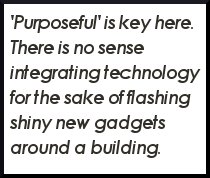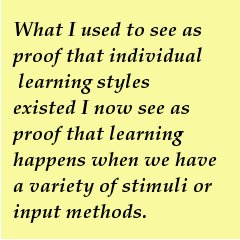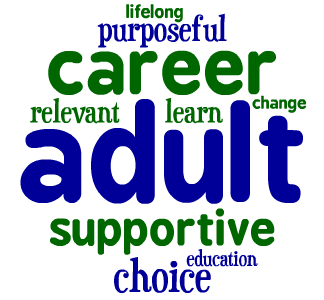I just received these resources from Rosemary, a professor of mine from when I studied Human Systems Intervention at Concordia University in Montreal (a program definitely worth checking out!) and thought what better way to a) save them and b) share them, than to do so by posting them here. So here they are with a thanks to Rosemary :)
1. Bandura’s Theory of Social Learning, which states that people learn
through observation, imitation, and modeling. Self-efficacy influences
behaviour in that people are more likely to engage in certain behaviours
when they believe they are capable of successfully modeling the behaviour.
* For an example of a programme drawing upon Bandura’s theory, see:
Neighbors Radio Drama
* For a 10-minute YouTube video on Bandura’s theory, see:
http://www.comminit.com/clickthru/ef7d90b008d59219bd25fca6e704e6af?node=
2. Lewin’s Theory of Change, which “adds the role of emotion, dialogue and
debate to an understanding of how behaviour change takes place: behaviour
(often resistant to change) is lifted up for scrutiny (sometimes through
an ’emotional stir-up’) and reconfigured through a process of discursive
elaboration (dialogue and debate) of new and preferable alternatives.”
* For more on Lewin’s Theory of Change (with an accompanying video), see:
http://www.comminit.com/clickthru/bacc9967686ca488e98e3476f3b7e30b?node=
3. Paulo Freire’s concept of critical consciousness, which emphasises
awareness-raising and the exposure of social, economic, and political
contradictions, together with taking action (individually and/or
collectively) against “the oppressive elements of society”. The notion of
learning-through-action-and-reflection underlies Soul City’s
community-based work. “As in the case of individual behaviour, collective
efficacy is important in that communities are more likely to take action
if they believe their action will make a difference.”
* For more on Freire’s theory, see:
Pedagogy of the Oppressed by Paulo Freire – An Analysis
* For an example of an initiative drawing on Freire’s theory, see:
Applying Freirian Model for Development and Evaluation of Community-based
Rehabilitation Programmes
4. Social Identity Theory, which presents an explanatory account of the
importance of social norms in determining behaviour. “Social
identification with a reference group is a key component of identity.”
“Social identity” refers to the individual’s knowledge that he or she
belongs to certain social groups and that this group membership has
emotional significance and value. “Positive social identity keeps groups
together and at the same time regulates individual behaviour.”
* For more on this theory, see Identity Theory and Social Identity Theory,
by Jan E. Stets and Peter J. Burke, Social Psychology Quarterly 2000, Vol.
63, No. 3, 224-237:
5. Cialdini’s Focus Theory of Normative Conduct, which elaborates on the
role of norms in determining behaviour. The theory distinguishes between
descriptive and injunctive norms. “How a person responds to a descriptive
or injunctive norm when they contradict each other is determined by which
kind of norm is salient (or in focus) at the time. The saliency of the
norm is influenced by situational factors such as: the social group around
the person; the importance of the action; and the circumstances which
accompany the situation.”
* See, for example, this summary of an article by Robert B. Cialdini on
The Soul Beat Africa site: New Ways to Promote Proenvironmental Behavior:
The Application of Persuasion Theory to the Development Of Effective
Proenvironmental Public Service Announcements
6. Information-Motivation-Behaviour-Skills model, which is a
learning-based model that acknowledges the role of social norms and peer
modeling, and highlights knowledge, attitudes, generic self efficacy, and
instrumental behavioural skills in bringing about behaviour change.
* Please see this summary of a thesis that explores this and other
theories might be of interest:
Evaluating Mass Media Health Communication: The Use of Evaluation Data to
Improve Theory
7. Theory of Interpersonal Behaviour, which states that the 3 most
important factors determining the probability of behaviour are habit,
intention, and facilitating conditions. The theory further explains the
role of beliefs, anticipated outcomes, norms, roles, self-concept,
emotions, and attitudes in determining behaviour.
* A thesis which is focused on this theory includes: Triandis’ Theory of
Interpersonal Behaviour in Understanding Software Piracy Behaviour in the
South African Context, by Julie Robinson, August 10 2010
8. Gibbons and Gerard’s Prototype/Willingness Model, which introduces the
concepts of “risk images” and “social comparison” and has been used to
understand the process whereby young people in particular move from
initial risky behaviours (based on “behavioural willingness”) to
established risky behaviours (based on “behavioural intention”).
* For more on this model, see the following summary:
Do High- and Low-active Adolescents Have Different Prototypes of
Physically Active Peers?
9. A Complexity Thinking Approach, whereby behaviour is seen as the
product of interactions between components of a whole system. The concept
is that these interactions create effects (often unforeseen) which the
components could not have generated singly (i.e. the whole is more than
the sum of its parts). “Informed by an understanding of Complexity Theory,
Soul City’s interventions aim to facilitate a process whereby options and
solutions peculiar to a particular context can emerge. Thus through
advocacy, social mobilization and media, Soul City facilitates the
capacity to learn and models the direction of change whilst addressing
many of the barriers to change.”
* For more on complexity thinking, see:
Evaluating Social Change and Communication For Social Change: New
Perspectives
 Yesterday was (unofficially) my first day as a local RÉCIT consultant for general adult education.
Yesterday was (unofficially) my first day as a local RÉCIT consultant for general adult education.


